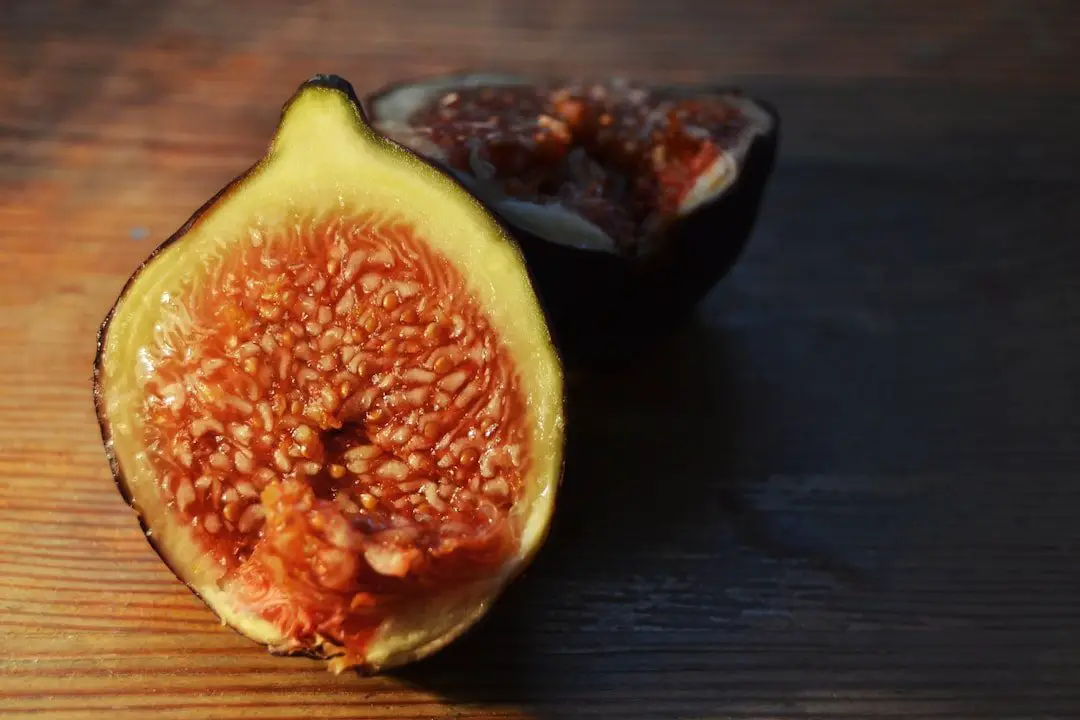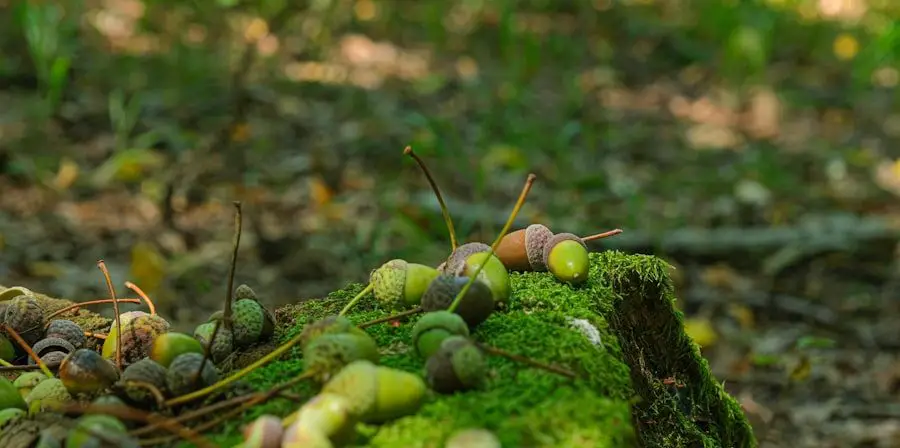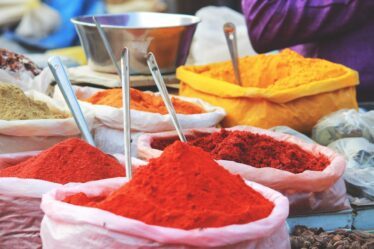
Nutmeg is a versatile spice that has been used in cooking and baking for centuries. It adds a warm, earthy flavor to dishes and can be used in both sweet and savory recipes. In this article, we will explore the history of nutmeg, its health benefits, and its culinary uses. Whether you are a seasoned chef or a novice cook, nutmeg is a spice that should have a place in your kitchen.
Key Takeaways
- Nutmeg is a versatile spice that can be used in sweet and savory dishes, as well as drinks.
- Nutmeg has a long history dating back to ancient times and has been used for medicinal purposes.
- Nutmeg has health benefits such as aiding digestion and reducing inflammation.
- Nutmeg can be used in cooking by grating it fresh or using ground nutmeg, and pairs well with other spices like cinnamon and cloves.
- Nutmeg can elevate desserts like pies and custards, and add warmth to drinks like spiced lattes and mulled wine.
The History of Nutmeg: From Ancient Times to the Modern Kitchen
Nutmeg has a long and storied history that dates back to ancient times. It is believed to have originated in the Banda Islands of Indonesia, where it was highly prized for its medicinal properties. The spice was traded along the ancient spice routes and eventually made its way to Europe during the Middle Ages.
During this time, nutmeg was considered a luxury item and was highly sought after by the wealthy elite. It was used to flavor food, as well as to preserve meat and other perishable items. Nutmeg became so valuable that it sparked a fierce competition between European powers, leading to the colonization of the Banda Islands by the Dutch.
Today, nutmeg is still widely used in cooking and baking around the world. It can be found in a variety of dishes, from classic desserts like pumpkin pie to savory dishes like meatballs and soups. Its warm, aromatic flavor adds depth and complexity to recipes, making it a staple in many kitchens.
Nutmeg’s Health Benefits: A Natural Remedy for Common Ailments
In addition to its culinary uses, nutmeg also offers a range of health benefits. It contains compounds that have anti-inflammatory properties, making it useful for reducing pain and swelling. Nutmeg is also known for its digestive properties, helping to soothe an upset stomach and improve digestion.
Furthermore, nutmeg has been used as a natural remedy for a variety of common ailments. It can be used to relieve toothaches and gum pain, as well as to treat bad breath. Nutmeg oil is often used in aromatherapy to promote relaxation and reduce stress.
It is important to note that while nutmeg can offer health benefits, it should be used in moderation. Consuming large amounts of nutmeg can have adverse effects, including hallucinations and nausea. It is best to use nutmeg in small quantities and consult with a healthcare professional before using it for medicinal purposes.
Nutmeg in Cooking: Tips and Tricks for Incorporating This Spice into Your Recipes
| Recipe | Nutmeg Quantity | Preparation Time | Serving Size |
|---|---|---|---|
| Spiced Apple Cider | 1/4 tsp | 10 minutes | 4 cups |
| Pumpkin Pie | 1 tsp | 1 hour | 8 slices |
| Butternut Squash Soup | 1/2 tsp | 45 minutes | 6 bowls |
| Spaghetti Carbonara | 1/8 tsp | 30 minutes | 4 servings |
Nutmeg is a versatile spice that can be used in a variety of savory dishes. It pairs well with ingredients like onions, garlic, and cream, adding depth and complexity to soups and stews. To incorporate nutmeg into your savory recipes, start by grating fresh nutmeg using a microplane or spice grinder. This will ensure that you get the most flavor out of the spice.
In addition to soups and stews, nutmeg can also be used to enhance the flavor of vegetables and grains. Try adding a pinch of nutmeg to roasted vegetables or sautéed greens for an extra layer of flavor. You can also sprinkle nutmeg over cooked grains like rice or quinoa to add warmth and depth.
If you’re looking for recipe ideas that incorporate nutmeg in unique ways, consider trying a Moroccan-inspired tagine or a creamy pasta dish with a hint of nutmeg. The possibilities are endless when it comes to using nutmeg in your cooking.
Nutmeg in Baking: How to Use Nutmeg to Elevate Your Desserts
Nutmeg is a classic spice in baking and is often used in desserts like pumpkin pie and apple crisp. Its warm, aromatic flavor pairs well with sweet ingredients like cinnamon and cloves, adding depth and complexity to baked goods.
To use nutmeg in your baking, start by grating fresh nutmeg using a microplane or spice grinder. This will ensure that you get the most flavor out of the spice. You can then add the grated nutmeg to your recipes, adjusting the amount to taste.
In addition to classic desserts, nutmeg can also be used in cakes, cookies, and other baked goods. Try adding a pinch of nutmeg to your favorite chocolate chip cookie recipe for a subtle twist. You can also sprinkle nutmeg over the top of a fruit tart or crumble for an extra layer of flavor.
Nutmeg in Drinks: From Spiced Lattes to Mulled Wine, Nutmeg Adds a Warmth to Your Beverages

Nutmeg is not only a versatile spice in cooking and baking, but it also adds warmth and depth to a variety of drinks. It is often used in popular beverages like eggnog and chai tea, where its warm, aromatic flavor complements the other spices in the drink.
To use nutmeg in your drinks, start by grating fresh nutmeg using a microplane or spice grinder. You can then sprinkle the grated nutmeg over your drink or stir it into the liquid for added flavor.
In addition to traditional drinks, nutmeg can also be used in coffee and other hot beverages. Try adding a pinch of nutmeg to your morning coffee for a subtle twist. You can also sprinkle nutmeg over the top of a hot chocolate or latte for an extra layer of flavor.
If you’re feeling adventurous, you can even use nutmeg to infuse cocktails and mocktails. Try adding a dash of nutmeg to a classic Old Fashioned or mixing it into a spiced rum punch for a unique twist.
Nutmeg in Savory Dishes: From Soups to Meat Dishes, Nutmeg Adds Depth to Your Cooking
Nutmeg is not just for sweet dishes – it can also add depth and complexity to a variety of savory dishes. It pairs well with ingredients like onions, garlic, and cream, making it a versatile spice for soups, stews, and meat dishes.
To use nutmeg in your savory recipes, start by grating fresh nutmeg using a microplane or spice grinder. This will ensure that you get the most flavor out of the spice. You can then add the grated nutmeg to your recipes, adjusting the amount to taste.
Nutmeg can be used in a variety of meat dishes, such as meatballs and meatloaf. It adds a warm, aromatic flavor that complements the other ingredients in the dish. Try adding a pinch of nutmeg to your favorite meatball recipe for an extra layer of flavor.
In addition to meat dishes, nutmeg can also be used in pasta dishes and casseroles. Try adding a sprinkle of nutmeg to your favorite mac and cheese recipe for a subtle twist. You can also stir nutmeg into a creamy sauce for lasagna or baked ziti for added depth.
Nutmeg’s Culinary Cousins: Other Spices That Pair Well with Nutmeg
Nutmeg pairs well with a variety of other spices, adding depth and complexity to dishes. Some of its culinary cousins include cinnamon, cloves, and allspice. These spices complement each other and can be used together to create unique flavor profiles.
To combine nutmeg with other spices, start by grating fresh nutmeg using a microplane or spice grinder. You can then mix the grated nutmeg with other spices in a small bowl before adding them to your recipes.
One classic combination is nutmeg and cinnamon, which is often used in desserts like apple pie and snickerdoodle cookies. The warm, aromatic flavors of these spices work well together and add depth to the dish.
Another popular combination is nutmeg and cloves, which is often used in savory dishes like soups and stews. The warm, earthy flavors of these spices complement each other and add complexity to the dish.
Nutmeg in Traditional Cuisine: How Different Cultures Use This Spice in Their Cooking
Nutmeg is used in traditional cuisine from around the world, adding unique flavor profiles to different dishes. In Indian cuisine, nutmeg is often used in curries and rice dishes, where its warm, aromatic flavor complements the other spices in the dish.
In Middle Eastern cuisine, nutmeg is used in dishes like kibbeh and falafel, where its warm, earthy flavor adds depth to the dish. It is also used in desserts like baklava and basbousa, where its aromatic flavor pairs well with sweet ingredients like honey and rosewater.
In Caribbean cuisine, nutmeg is used in dishes like jerk chicken and callaloo, where its warm, aromatic flavor complements the other spices in the dish. It is also used in desserts like rum cake and coconut tart, where its aromatic flavor adds depth to the dish.
Buying and Storing Nutmeg: Tips for Ensuring Freshness and Quality
When buying nutmeg, it is best to purchase whole nutmeg rather than pre-ground nutmeg. Whole nutmeg has a longer shelf life and retains its flavor better than pre-ground nutmeg. Look for whole nutmeg that is firm and unbroken, with a strong aroma.
To store whole nutmeg, keep it in an airtight container in a cool, dark place. This will help to preserve its flavor and aroma. Whole nutmeg can be grated as needed using a microplane or spice grinder.
If you prefer to use pre-ground nutmeg, look for a high-quality brand that is fresh and fragrant. Keep in mind that pre-ground nutmeg will not have the same depth of flavor as freshly grated nutmeg, so you may need to use a bit more to achieve the desired taste.
To ensure that you are getting the most flavor out of your nutmeg, it is best to grate it as needed rather than grating a large amount and storing it. This will help to preserve its flavor and aroma, ensuring that you get the best results in your recipes.
If you’re a fan of fresh nutmeg, you’ll definitely want to check out this article on Flavorful Sips about the versatile Mediterranean medlar. This unique fruit is packed with flavor and can be used in a variety of dishes and drinks. From jams and jellies to cocktails and desserts, the possibilities are endless. Discover the fascinating flavors of the Mediterranean medlar and get inspired to try something new in your kitchen. Read more



